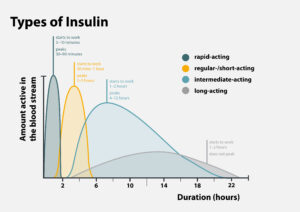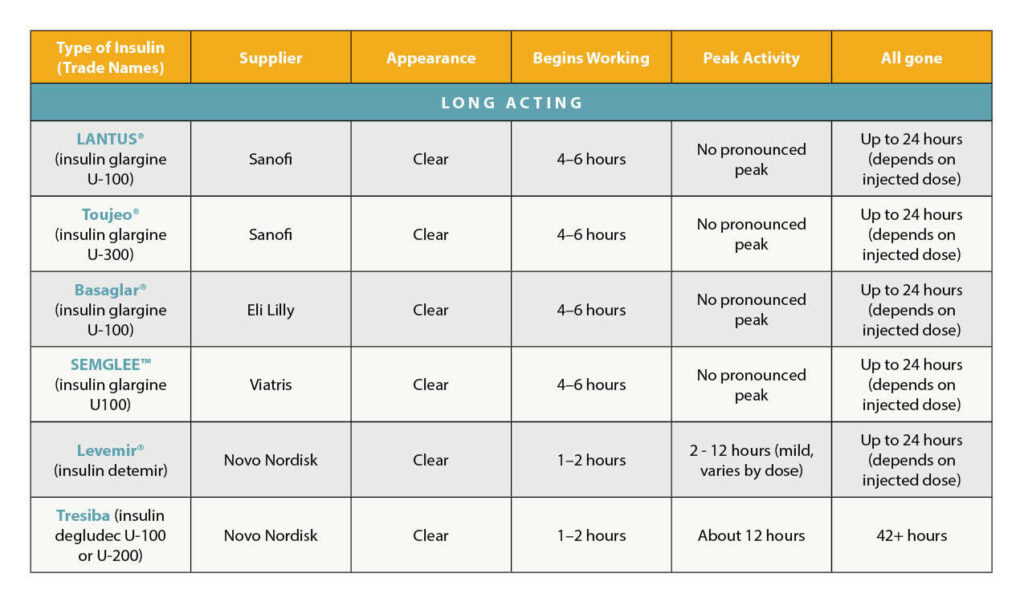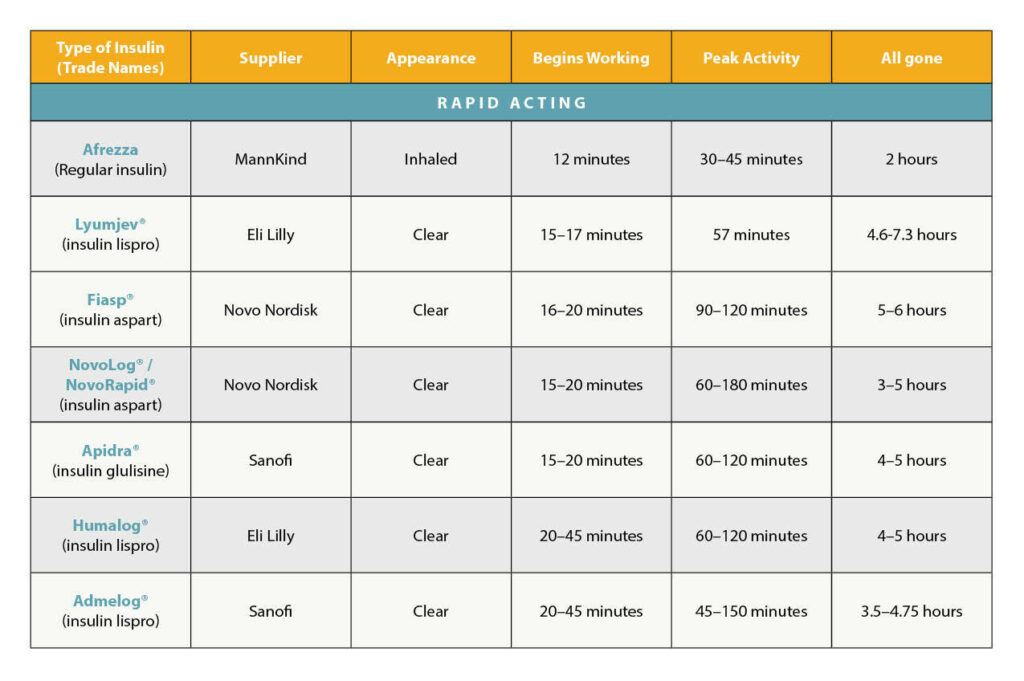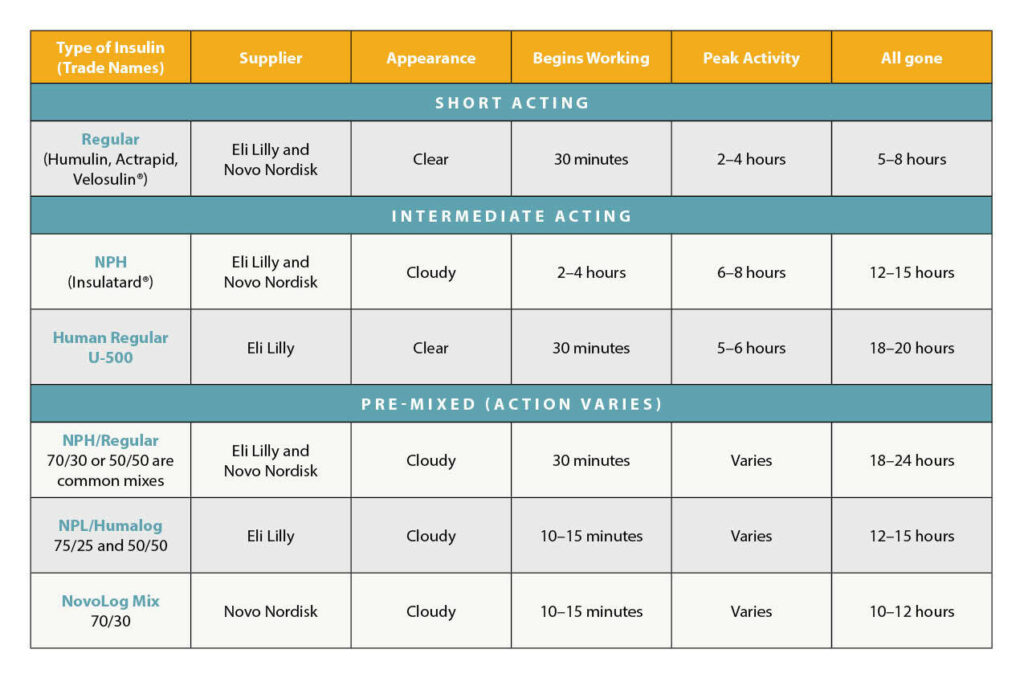There are many different types of insulin and different ways of taking it. No matter what type you use or how you take it, people with type 1 diabetes need two basic types of insulin: basal and bolus. The good news is that, right now, we have options, and the options keep changing. In this article, we’ll go through the insulin options available in the United States as of January 2022. For more information on how to get insulin into your body, check out CWD’s What is Insulin Page.


Basal and Bolus Defined
Basal insulin is the background insulin that covers your normal metabolism and insulin needs. Basal insulin requires a slow, steady absorption, either with a long or intermediate acting insulin or every few minutes with rapid or ultra-rapid insulin. A bolus dose of insulin is when insulin is taken in a larger all-at-once dose rather than basal insulin. Where the basal insulin is slow and steady, the bolus is large and in charge. Bolus insulin needs to be taken with meals to cover carbohydrate consumption.
There are two main ways to do basal-bolus insulin therapy: Multiple Daily Injections (MDI) and Insulin Pumps (a.k.a. Continuous Subcutaneous Insulin Infusion or CSII). As noted by the name, with MDI, there is usually one injection of basal insulin and then three or more of bolus insulins, depending on how many meals and snacks are eaten throughout the day. For an insulin pump, the only insulin that is in the pump is the rapid acting insulin. The pump then gives tiny amounts of insulin every few minutes, acting just like a functional pancreas would. Then the wearer takes meal-time boluses, and correction boluses, as needed.
Both options are viable for people with diabetes, and people with diabetes should have the choice to use either regimen, depending on their lifestyle, wants, and needs. It also does not have to be a permanent decision, and often people that wear insulin pumps will take breaks or “vacations” from their diabetes devices when they so choose.
Basal Insulins Available:4


Bolus Insulins Available:4


A Note on Biosimilar Insulins
In July 2021, the first insulin biosimilar came to market in the U.S. Semglee (insulin glargine-yfgn) is an insulin that is interchangeable for Lantus (insulin glargine), and the goal is that more insulins come to market to help reduce the expense of insulins in the U.S.5 Biosimilar means that it can be used in place of the brand name insulin and the cost should be less for the person with diabetes, similar to generic versus brand name drugs.
Split-Mixed Insulin Dosing
Before basal-bolus was available, the only options were split-mixed insulin. This technique combines an intermediate-acting insulin and a short-acting insulin. Doses are taken twice daily, before breakfast and before dinner. The split-mixed regimen has been proven to be less effective in preventing complications for people with diabetes.1 Unfortunately, this does not mean that it is not used for many people living with diabetes worldwide and in the U.S. due to challenges with cost.2 The intermediate and short acting insulins are also the only insulins available in the U.S. without a prescription.3
Diabetes is also not a one-size-fits-most condition, and sometimes the best treatment for someone with diabetes is split-mixed dosing, even if it’s just temporary due to cost challenges, lack of insurance, or need to simplify the diabetes regimen. It’s not as close to what the body does without diabetes, but it can be used to manage diabetes nonetheless. If you are a person with diabetes who is struggling due to lack of insurance or lack of prescription from a doctor, you can go to Walmart and purchase NPH and Regular insulins for about $25 a vial out of pocket.3
However, the insulins work a bit differently than the normal Multiple Daily Injections, so understanding how these insulins work is important to keep yourself safe. You should talk to your healthcare provider before making this switch so that they can help advise you on adjusting the insulin doses to match your other therapy. And as always, monitoring blood glucose levels often can help you determine what adjustments need to be made to the doses. Here is some key information on these insulins, to help you understand how they work in the body. Additionally, making sure you are eating regular meals at similar times every day can be very helpful when taking these insulins.
Intermediate and Short Acting Insulins Available:4


If you have been using the same insulin regimen for some time and are looking to find a different regimen to help decrease the burden of diabetes or improve your glycemic outcome, talk to your healthcare team and let them know. Sometimes we get into routines, and it seems easier to stay with what we’re doing. but if you are not meeting your goals, it could be time for a change. Many doctors’ offices have access to samples of other insulins as well, so asking for a sample to try is definitely a route worth pursuing.
Bottom line – you have a lot of options and can always change if you are feeling like you need to try something new. The biggest barrier will likely be the insurance coverage. If you’re having issues with prescription coverage, CWD has a page dedicated to prescription coverage laws by state in the U.S. and resources to help ensure you or your loved one can get the insulin they need.
- The Effect of Intensive Treatment of Diabetes on the Development and Progression of Long-Term Complications in Insulin-Dependent Diabetes Mellitus
- ISPAD Clinical Practice Consensus Guidelines 2018
- Dia Tribe Article Uninsured and Need Insulin?
- CWD Article: What is Insulin?
- FDA Approves First Interchangeable Biosimilar Insulin Product for Treatment of Diabetes
Written and clinically reviewed by Marissa Town, RN, BSN, CDCES


